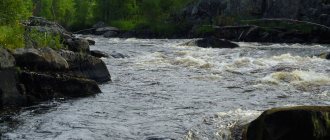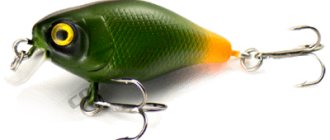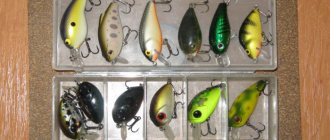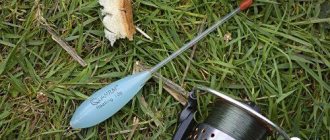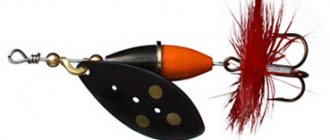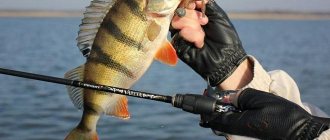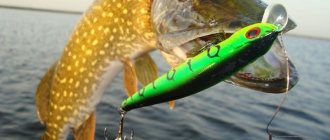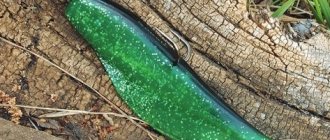How to equip a spinning rod for chub fishing
Tackle for catching chub should be elegant, sensitive and quite durable. It is advisable to have two spinning rods - an ultralight rod and a universal rod. Use rods of fast or fast-medium action. Ultrafast is not used for targeted chub fishing, as is a slow action rod. An ultra-fast spinning rod is not very catchy on small baits; a slow one will not allow you to fight on equal terms with sharp and strong fish.
For small and medium-sized rivers, a stick with dough up to 10-12 grams is well suited. The reel is matched to the rod.
Based on experience in selecting gear, a reel for chub fishing should have the following parameters:
- good quality spinning reel from Daiwa, Shimano and other top manufacturers;
- smooth running, no jerking;
- ideal laying of fishing line (cord);
- clearly working clutch;
- gear ratio in the region of 4.5-5.2; when working on medium and large rivers, higher speed options in the region of 5.3-5.6 are possible.
Ultralight tackle can be equipped with either a good quality fishing line or an ultra-thin slippery cord with or without a fluorocarbon leader, depending on the fishing conditions, baits and fishing techniques used.
All fittings must be of ideal quality, as discreet and delicate as possible.
The spinner's set of baits includes microwobblers, spinners and spinners, micro and mini silicone baits - vibrotails, twisters, worms, slugs and various “crackers”.
Choosing a place to catch chub
The chub, like many other fish, has its own preferences and favorite habitats. Knowing them, the spinner will narrow down the list of places where the fish can be found. For example,
1. The chub is a large predatory fish that loves rivers and strong currents. It is almost impossible to find in shallow reservoirs and lakes. Standing water is not for him.
2. The current washes away all the silt, which the chub does not like. It prefers a hard bottom strewn with stones or sand.
3. It can often be found on river rifts or sand spits.
4. The chub especially likes to hunt under trees and snags hanging over the water, along cliffs and falling bushes, the ground under which is washed away by a strong current. Because it is full of various bugs and other insects. Trolling or wading fishing is best here.
5. If the shallow bottom of the river near the shore gives way to a deep cliff, then a chub can also swim here. Because the chub feeds in such places too.
6. Chub can be near the pilings of bridges and various water structures. Because the pillars stuck into the ground divide the flow of water into several separate currents, creating turbulence that chubs love.
7. Chub is a schooling fish. Flocks are created by several small representatives. The larger the fish, the fewer fish there are in the school. The largest chubs can swim alone, in isolation. And they can be found anywhere, even in places where the chub does not like to be.
Spinning rod for chub fishing (rating)
Spinning rod for chub is selected for the season, for the intended reservoirs and bait.
In early spring you can catch a really big big one, so you need to select the appropriate spinning rod. Also during this period, the chub often stands at the bottom and in deep holes, so appropriate baits are needed - medium wobblers, spinners, silicone.
A spinning rod with dough up to 12-15 grams is suitable. At this time, fishing is carried out from the shore, due to the ban on fishing from a boat. It is also often necessary to treat fairway edges and edges under the opposite bank. Therefore, you need a spinning rod that is catchy and sharp, with a length in the range of 2.4-3.2 meters.
For small rivers for catching chub, you can take a more delicate rod. With dough grams up to 10.
Options for different budget opportunities, small and medium-sized rivers:
- Norstream, 712UL 2.16 m 2-7 g – a budget rod, works well up to the upper limit of the test, and quickly lines up after casting. Catchy and very sensitive. Works with micro jigs, wobblers and small spinners.
- Favorite Blue Bird 16′ BB-762UL-T, 1.5-8 g is a classic rod for chub fishing. At first glance, it’s a little runny, but in practice it works well against all underwater obstacles and bottom irregularities. Catchy, resistant to fish impacts and hooks.
- Graphiteleader Bellezza Correntia GLBCS-632UL 1-8.5 g . Short (1.9 meta) stick, very good for a boat.
- Norstream Areal AR-66L Jaeger (1.98 m; 3-10 g) is an excellent option for small and medium-sized rivers. High-quality spinning rod for catching chub with small and medium wobblers. You can work against the wind, with sailing baits, in heavy and snagy places. Ideal geometry, which allows you to cast without any extra effort. Allows you to work with deep baits.
More powerful blanks for medium and large rivers, when working with large minnow wobblers, crankbaits and shads:
- St.Croix Avid Series AVS69MLXF 2.10m 3.5-14gr. Elastic, powerful form combined with perfect fittings and assembly. Fits in your hand like a glove. It does not tire you even during active sea fishing and handling large and stormy riffles.
- Favorite X1 802L 2.44 m 3-12 g is a more budget option. Just right for beginners. The only drawback is that the lower test is not sensitive enough. We recommend using with baits from 4-5 grams.
- Discovery II DS II-70L (2.13 m; 4-18 g). Works across the entire test range. It works great with both wobblers and spinners. Allows you to get the bait into any “patch”, very well to treat precisely the necessary areas.
Expert opinion
Vladimir Poltoranin
Fisherman - expert
If you have the funds, you should pay attention to rods from the following manufacturers: ST.CROIX, Shimano, G.Loomis, Graphiteleader and other top market brands.
In late spring and summer , chub fishing becomes more active, the fish rises to the surface, hunts in riffles, rapids and along underwater vegetation, roots of fallen trees and bushes, boulders and other obstacles. Therefore, the form must have the appropriate conditions and parameters.
In general, to catch chub at this time you need a high-quality rod, sophisticated and as sensitive as possible. At the same time, we should not forget that the big-lipped predator is known for its sharp bites and stubborn resistance, therefore the chub spinning rod must be reliable and powerful.
At this time, fishing is increasingly carried out by wading. This makes it worth “dancing” when choosing the required stick.
Top series of spinning rods that have proven themselves in practice when catching chub in spring and summer:
- Norstream Area New;
- Graphiteleader Finezza Nuovo;
- St.Croix 16 Legend Elite and others.
The formation for chub is standard - fast, slow-fast, slow (when fishing on clean rivers, where sharp, clear wiring without delays is not needed).
When choosing a length, consider the following conditions:
- Fishing conditions: fishing from the shore - 2.2-3 meters, from a boat 1.8-2.2 meters, in wading, a long spinning rod is often useless, unless the wading is chest-deep, when to fish out you only need a long rod from 2.6 meters (the deeper it is expected wade, the longer the stick is needed).
- The depth and size of the river - the larger the river, the more powerful and longer the stick is needed.
- What kind of bait is supposed to be used for fishing? Most chub lures are in the range of 2-15 grams (wobblers, microjigs, spinners, flies, rigs).
- The test, if we take a universal one, is around 2-10 grams.
For autumn chub fishing, the spinning rods suggested above are suitable.
There are no particular differences when choosing a form. The only point worth considering is that the closer it gets to autumn, the more often fishing occurs from the shore and boat. Wading fishing is no longer so relevant.
Selecting a spinning rod by characteristics
Catching chub with a spinning rod is a delicate matter and only ultralight or, in extreme cases, light tackle can ensure the success of the hunt. Only such equipment can deliver small and light bait over long distances; fortunately, the size of most units of the caught predator, and an individual weighing 2 kg is considered a serious trophy, allows comfortable fishing with ultralight. Next, we will look at the spinning tackle recommended for chub fishing, which can satisfy most fishing conditions.
Rod length
For the base, choose a light and short spinning rod, since fishing will be characterized by a high degree of dynamic casting combined with frequent movements and supply of bait from inconvenient places. Spinning rods for chub are selected in the length range from 2.1 to 2.3 meters, with lightweight guides with a ceramic liner and a cork handle with a plastic reel seat. The large length of the instrument, 2.5-3 meters, can only be determined by a known fishing location, in which there are no obstacles. This rod makes casts that are much more effective in terms of distance.
Material of manufacture
Dynamic fishing implies the selection of the lightest material for the rod blank, which corresponds to the choice of graphite tackle. It is worth noting that graphite fishing rods are highly expensive and an alternative to this kind of material can be a carbon fiber version of a spinning rod, which will be 25–30% heavier than graphite, but half the price. You can catch a chub using a spinning rod using both types of gear, but the degree of fatigue of the fisherman during hunting will be completely different, so the choice remains entirely his.
Test
The ultralight fishing parameter includes a test level of 2 to 5–7 grams. Lures of such masses most satisfy the conditions of chub fishing. When using light gear, they focus on more miniature options in the range, leaning towards selecting gear with tests from 5 to 15 grams. As a rule, large baits for catching large-mouthed predators are not among the priority tools.
Build
A spinning rod for catching chub should be distinguished by the sharpness of the quivertip. The best controllability of baits and the implementation of quick hooking are guaranteed by spinning rods with ultra-fast and fast action. The conditions for placing baits in moderate and fast currents, combined with the development of sharp and fast bites, are fully worked out with hard blanks. The disadvantage of such rods is considered to be the difficulty of catching a wild trophy, but here the fisherman is saved by accumulated fishing practice, the use of monofilament cords and proper adjustment of the reel clutch.
Reels
When fishing for chub, the reel is always matched to the form.
It is necessary to check:
- balance with form;
- build quality;
- smooth ride;
- clutch operation;
- The standard size is most often in the region of 1000-2000 according to Shimano, depending on the rod.
Good series (we select the standard size to match the form):
- Daiwa freams;
- Shimano Exage;
- Shimano Twin Power;
- Ryobi Excia;
- Shimano Nasci.
There are many good quality reels on the market now. And many of them are in an affordable price range.
Fishing lines (braided cords)
Slippery braided cords are most often used.
They have the following advantages compared to monofilament:
- more durable with a comparable diameter to fishing line;
- do not wear out as quickly as monofilament (abrasion resistance) - important when fishing in riffles and shallow depths;
- has no stretchability - allows you to make complex wiring and any animation;
- casting range – you need to choose a slippery fence;
- has very good sensitivity - transmits the bite of the most cautious fish;
- cuts waves and currents, which is especially important when fishing on rifts - the line is blown out by the current in an arc and does not allow for either retrieving or hooking.
We recommend the following options:
- Berkley NanoFil.
- Pontoon 21 Eight Braid.
- Sunline Super Braid.
- Berkley Whiplash.
- Duel PE Super X-Wire 8.
- Stren Sonic Braid.
- YGK G-Soul Upgrade 8.
All cords are time-tested, reliable, and resistant to the external environment. We select the diameter to match the base of the tackle - the blank and the reel.
We recommend using slippery cords with knotless cords. Such knots on slippery braids are the most reliable. We use the smallest sizes.
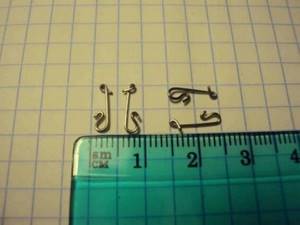
It is imperative to use (especially in clean, clear water) the thinnest possible fluorocarbon. For example, Sunline SIG-FC.
The Double Grinner, Carrot and others knots are suitable for splicing fluor and braid.

Review of popular models
Graphiteleader Tiro spinning rods are bright representatives of universal models, striking with their stylishness and high functionality. These sensitive rods work effectively in both twitching and jigging. They have also proven themselves well when fishing with spinnerbaits, crankbaits, oscillating and rotating spoons.
The spinning rod combines overall lightness with amazing power in the butt of the handle, allowing you to cope even with trophy fish. The advantages of the line include very low weight for a station wagon and a spaced handle that increases the sensitivity of the stick. To ensure uniform loading of the blank, there are 10 guide rings on the rod, with the upper rings being made in an elongated shape to avoid overlaps.
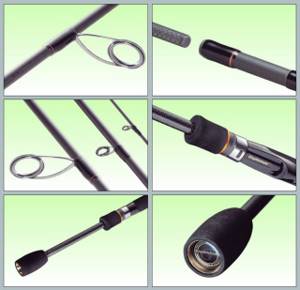
The main goal and improvement of Graphiteleader is the component of three goals "Accuracy, Range, Power"
The Graphiteleader Silverado spinning rod is a universal rod produced in two versions with a casting of 3-15 and 5-20 g and a length of 2.24 and 2.34 m, respectively. What distinguishes the series is its long casting range combined with the sensitivity of the blank provided by OSS technology. The rod blank is made of high-modulus carbon fiber and is equipped with lightweight Fuji guides in a titanium frame, which improves the balance of the rod. Silverado is a striking example of how a spinning rod designed for sea fishing has proven itself in catching pike and pike-perch.
Graphiteleader Finezza Neo spinning rods are an ultralight series that makes it possible to fish with spinners and wobblers, as well as with a microjig. The rod is made of high modulus carbon and is built using OSS technology, which ensures its low weight and high sensitivity. Despite the elegance of the rod, it has a good reserve of power.
Graphiteleader Vivo spinning rods were jointly developed by Olympic and Russian companies for catching pike perch, pike perch and pike perch. These are some of the best models for fishing in our reservoirs, made in Japan. A special feature of this line of spinning rods is the very wide test range of each model - 1-12, 3.5-15, 6-24, 9-35, 16-60 g, which allows you to select a spinning rod for any fishing conditions.
Read more
How to cast a spinning rod
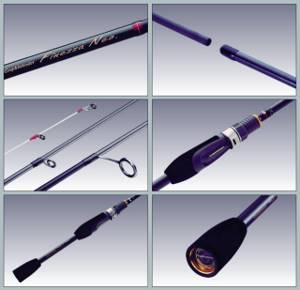
Graphiteleader manufactures its products from high-tech composite material
Graphiteleader Rivolta spinning rods are another joint development. These are light and medium class fishing rods, made in China, but subject to rigorous quality control.
Spinning rods Graphiteleader Aspro (Graphiteleader Aspro) is an original line developed jointly by spinner Andrei Pitertsov and the Olympic company. It is a universal fishing rod suitable for various fishing conditions and methods. Spinning rods work great in both leader, jig and twitch fishing.
Selection of baits
The best universal baits for catching small, medium and large chub:
- Wobblers are probably the most popular bait when fishing for chub. Wobblers with different depths and game activity are used. The most popular forms are crank, fet, shad, and minnow. Sizes from 1.5 to 5-6 cm are the most popular. Which wobbler will work in a given situation depends on the time of year, water transparency, depth and structure of the bottom, and the wiring technique used. Universal chub wobblers include: CrackJack 38 and 48, RedRag 36, FOP 32 and FOP 38 from Pantun 21, ultralight microcrush Cheerful 34SR from the same Pantun 21, Jackall Chubby 38 SR and a deep version depending on the depth, L-minnoy from Yu -zurri, Salmo Tiny, Smith Camion, Megabass Baby Griffon. In terms of colors, we recommend having at least the most popular and working models in several options - light or light with dark inclusions, dark and acidic. The combination of black-orange, white-red, black-red, green and yellow works well.
- Silicone baits , regular and edible. Not the most popular bait for hunting bigmouth. But it can be used and should be used in certain conditions. Size from one to two inches. These can be twisters, worms and slugs, small vibrating tails and crustaceans, as well as imitations of various insects during their flight - dragonflies, grasshoppers, spiders, various surface rubber. Examples - Bait Breath Bj-Bug, IMP level 2; Nymph Berkley Powerbait Micro, Percas Lexxy, Lucky John Hogy Hog, Lucky John Alien Bug 1.5 and the like.
- Spoons - spinners and spinners. Small turntables 00-2 according to the MEPPS classification are used. Popular turntables in various colors from Blue Fox, Мepps, Myran, Maniacs. Micro-oscillators also work very well for chub - various Japanese ones can be obtained at specialized flea markets and on the Internet (Waterland, Nories, Ivyline, Tackle House, RodioCraft and many others - the choice is huge), American Williams, SV Fishing, Kosadaka, the classic Smitt pure. Eye-catching colors and calmer light and dark colors and combinations thereof. Most often they are equipped with a single hook. They work especially well in late summer and autumn.
These “crackers” work well when spinning chub fishing in May-June-July, when various insects come out:
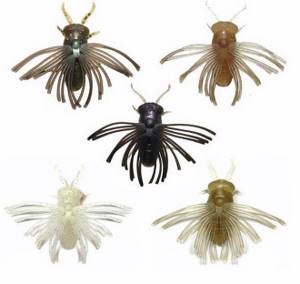
Techniques and tactics of hunting chub with a spinning rod
Catching chub with a spinning rod is a real hunt and a struggle to see who can outwit whom. This is undoubtedly more difficult than catching a pike, but an interesting duel with a smart fish gives an unsurpassed sensation.
Chub is a fish of the river, less often of the stream and bay.
Chub fishing is more effective either from a boat or in a wade. A very sighted and cautious predator often simply does not allow the shore angler to approach the casting line, avoiding possible danger in advance.
When fishing from the shore, you need to make the most of all possible cover and the ability to hide yourself.
On small rivers it is generally easier to catch chub. You can work deep from the shore, masking yourself as much as possible from a cautious opponent. Also, small rivers often allow you to almost wade from bank to bank in search of fish - a kind of variation on fishing from a boat.
Well, and baits - on large rivers it is simply unrealistic to use most working baits for chub.
In such situations, the options are as follows (all are not ideal):
- The most obvious one is to increase the weight of the bait, which means reducing the chances of a bite and coarsening the tackle as a whole.
- Use tricks - spaced-out equipment for silicone, suspenders for wobblers, use spinners with a core, vibrators made of thick metal. In general, each option has a place to be if necessary.
- Using a boat is the best option, but this is not always possible - it is prohibited, there is no watercraft, or there is no way to deliver it to the shore.
In early spring (after the ice melts and until May) it stays near the bottom, near snags, sometimes in middle water. Selects places with low and medium currents. Gradual preparations for spawning are underway.
As the water warms and various insects emerge, the lobster rises to the upper layers of the water, which dictates the fishing strategy. At the same time (late spring, early-mid summer) the chub moves to the riffles. It often “grazes” under the overhanging crowns of trees, hoping to profit from falling insects.
By autumn, it gradually falls into deeper places - into edges, holes, places behind sharp turns of rivers.
Due to different lifestyles at different times of the year, fishing tactics will be different.
Catching chub with a spinning rod in spring
In early spring (March, April, early May), the chub stands near the bottom. With a very early and warm spring, already at the end of April it can begin to gradually rise to high water and higher. Accordingly, it is worth looking for fish in these layers of the reservoir.
The chub stays near the coastal edge, on deep slopes, at the roots of fallen trees and bushes. He loves to “graze” in windbreaks and thorn-breakers. In such a situation, it is good to use pinpoint throws at the intended attack points. Good wiring for demolition along littered trees and deep edges.
Upstream casts are good for upstream fishing. This type of wiring is especially effective for floating (and neutrally buoyant) deep-water and medium-depth wobblers. A cast is made upstream, and the winding of the cord is selected at such a moment as to drive the wobbler under the water in the required zone - this is more natural and tasty for the chub.
Examples:
- Yo-Zuri Dino Crank 8.5 g, – classic, uniform, twitching, stretching;
- Smith D Incite is an interesting wobbler that works well for chub, ide, and white fish;
- Duel Hardcore Shad 60SP 60mm 6.5g – suspender, instant penetration, very clear feed;
- Jackall Panicra DR 33 mm 3.6g – a good flying baby, depth up to two meters;
- Jackall DD Chubby 38 is a classic.
Chabiks generally work on chub all season long. You just need to choose the depth of water, buoyancy, and color.
Heavy driven spoons, spinners with a core, and spaced jig rigs also work well.
In spring, the water is cloudy, and various pungent and contrasting colors are used. Lemon, light green, orange, Mat Tiger, combinations thereof.
In May, the May beetle emerges. Good and active fishing for a live insect or its imitation by throwing it under trees - willow, poplar, willow.
Summer fishing for chub, spinning
In late spring and summer, chub most often stay on the surface or in the surface layer. At this time, you need to use bait with appropriate depth. Surface and mid-depth wobblers, special silicone baits, oscillating spinners and spinners without weight.
It’s good to fish at this time on a drifting boat, throwing bait under overhanging branches of trees and bushes. Chub and ide stand there in ambush, collecting fallen insects from the trees. On small and medium-sized rivers, it is worth going along the shallow bank, casting either at right angles to the steep bank, or slightly “upstream”. It all depends on the bait and the depth of the fish.
We are looking for niches and potholes in the banks, spots with differences in depth, sudden changes in currents, rifts, places where rivers and bays meet - all these are supposed sites for the handsome big-faced fish.
Wobblers:
- CrackJack 38 and 48;
- RedRag 36;
- Strike Pro Midge;
- Strike Pro Baby;
- Kosadaka Roger surf and Ion XS;
- FOP 32 and 38;
- Cheerful 34SR;
- Jackall Chubby 38 SR, L-minnoy;
- Salmo Tiny;
- Smith Camion in shallow and mid-water variations.
Turntables from Mepps, Muran, Bluefox in bright colors.
Various weighted flies and micro-spinners on ultralight tackle work very well.
Autumn spinning fishing for chub
Autumn spinning fishing for chub is not much different from early spring. The chub again rolls into deeper holes, onto the edges, looking for places of shelter.
The difference is that smaller chub still hang out in the summer camps. And also that the water at this time is clear and the fish are more careful and careful. It is quite difficult to catch it, but the techniques are the same as in summer and autumn in a combination of techniques. You also need to experiment with colors, wiring, and presentation of baits.
Spinning fishing for bass in winter
Spinning fishing involves fishing in open water. What is possible in open water in winter - abnormally warm winters are now not uncommon, open water zones are also possible at wastewater discharge points, hydroelectric power stations, and dams.
Of course, winter is not the best time for spinning in general, and chub fishing in particular. But this is possible if you have a great love for active fishing.
In winter, you need to look for places with deep water and underwater shelters. With minimal or no current.
The chub in winter does not reveal its presence in any way and this is another difficulty. We have to process large areas of water without a clear chance of success. The baits used are shad wobblers, minnows, and crankbaits. The wiring is slow and sluggish, uniform. You can use silicone with a large amount of attractant, since in cold water some of the properties of tasty rubber are lost.
It is worth noting that the chub is a fish for which the success of hunting depends more on the experience of the fisherman than on the tackle. It is the ability to outwit a smart fish, to find an approach to it in various conditions, that ensures the ultimate success/failure of fishing. The right tool in the hands of a skilled fisherman and knowledge of the habits of the fish increase the chances.
Chub fishing technique
In order to successfully fish and catch a chub, a spinner must first find it. And this is possible if the habits of this fish, its favorite places and habits are known. What you need to pay attention to first:
1. The chub swims in a flock. And the larger the size of the fish, the smaller the number of individuals in the school. The largest specimens swim alone. Therefore, if a spinner catches small fish, then most likely you can make many casts. The rest of the pack will also be hooked.
2. Being omnivorous and voracious, the chub actively hunts in the morning and evening hours. And the angler should start fishing at this time. The bait will be eaten and the fish will be hooked.
3. When fishing on the shore, the spinner needs to walk around the shore for a long time and make frequent casts into the water. The chub is found among trees and snags, on river riffles and streams of water. If there are holes at the bottom, and the fisherman knows about them, then he definitely needs to cast his fishing rod there.
4. Before going chub fishing, the angler must prepare his camouflage. Chub is a suspicious fish. If he notices a fisherman, he will not take the bait. In this case, you can use an outfit with a certain color scheme to match the color of the shore (green, sand and others).
5. The bait should be released against the current. There is no need to wind and unwind the fishing line. Here you need to rely on the natural play of the bait among the water flow. And only occasionally make hooks if the bite is not felt. If the fish is not caught on the bait, then you need to change the bait. In this case, you can move away and cast in another place.
6. It should be remembered that once a chub is hooked, it stubbornly resists. First of all, she rushes into the thickets, where the fishing line can get tangled. The fisherman must be prepared for this and carefully fish in the opposite direction from tree branches and other vegetation.
